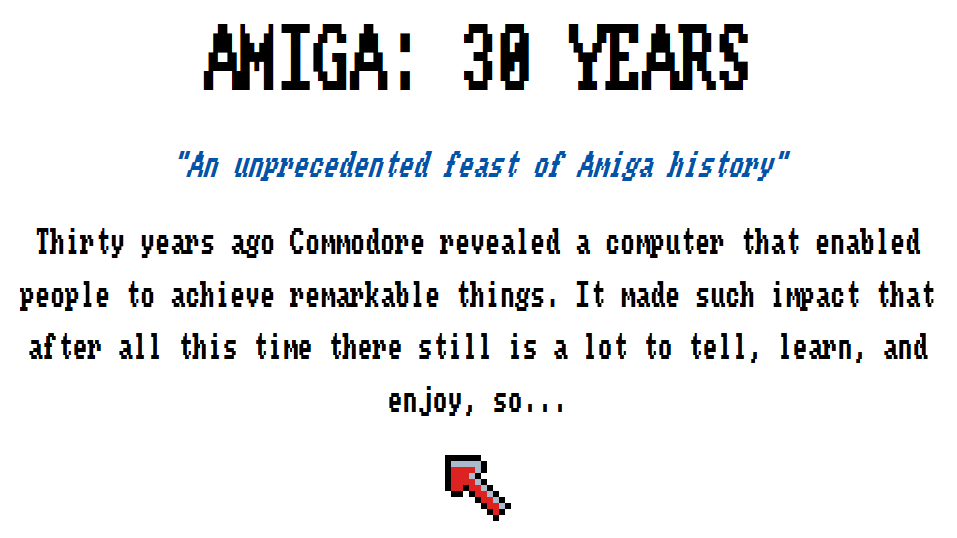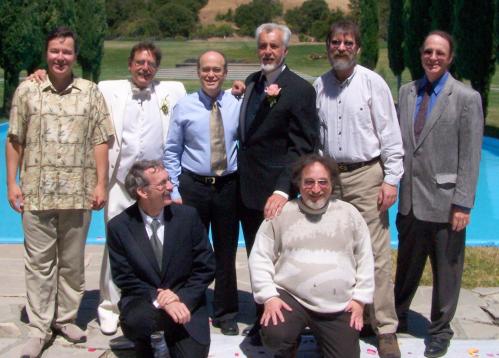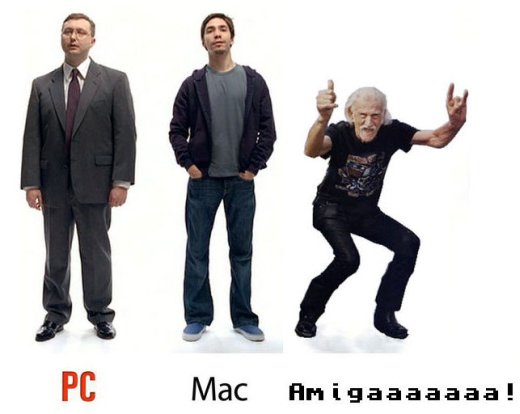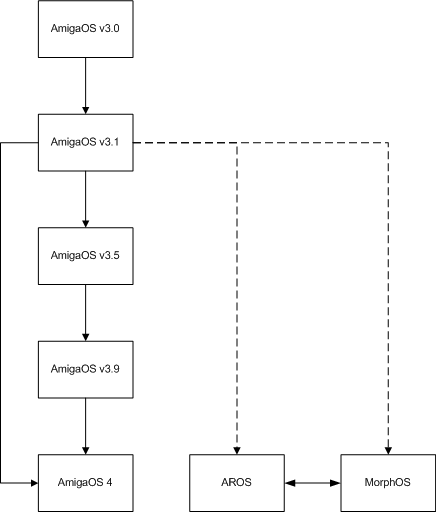HistoryTable of Contents30 Years AnniversaryOn July, 23rd, 1985 was presented the Amiga 1000! Celebrations were held 30 years later...
In Amsterdam or Mountain View
ArsTechnia featured an article entitled "The Amiga turns 30—“Nobody had ever designed a personal computer this way”" as well as a short piece on using an Amiga 500 nowadays... IEEE Spectrum, the magazine of IEEE, also featured articles about this "unkillable" machine!
Home Computer HistoryHome computers were made popular by several early (and incompatible) computers who really change the face of computing and introduce computing to the masses... Here is my take on this early history of the home computers. In particular, the design of the Commodore 64 is a textbook example of integrated production and design choices as well as focused, smart decisions, which really made the difference! Also interestingly, Apple was "really scared of the Amiga. Fortunately, Irwin Gould helped Apple by running Commodore into the ground. was involved in one attempt (by) investors to buy Commodore from I.G. and, later, he tried to hire me." according to Jean-Louis Gassée formely at Be, Inc.
Also directly related to the Amiga is the recent discovery of "lost works" by Andy Warhol on his Amiga. These works were restored from old Amiga disk using various techniques (although the restorers clearly suffered from the "not invented here" syndrome
Amiga Team in 2007The following photo was taken at Dale Luck's wedding in June 2007.
This photo features most of the original Amiga design team, with:
Ars TechnicaArs Technica also features a multi-part story of the Amiga:
It also published an article about the fight between IBM OS/2 and Microsoft Windows, featuring praises for the Amiga and an article about the use of Amigas at NASA!
The Digital AntiquarianJimmy Maher, the Digital Antiquarian, also wrote a fantastic book on the Amiga, The Future Was Here, and discussed about the early years of Amiga in a two-part article:
In a Nutshell...What is the Amiga all about in one picture...
... and in DetailsThe following images summarise the past and current state of the Amiga computers and of their operating systems. The first figure includes also the release years for each Amiga computer and the company who manufactured it. If no company name is given, it is the same company as the "main" company on the horizontal timeline.
This second image show the evolution link between releases of the Amiga OS. AmigaOS 4 the most recent release of the AmigaOS is mostly a descendant of AmigaOS v3.1. Not shown in the image is the very first ancestor of the AmigaOS: TripOS by Metacomco.
A complete guide to the history of the Amiga computer and OS is available on-line. Channel Daily News features an article on the lessons to learn from Amiga (and Commodore) demise.
A-EONSince 2009, A-EON has been the driving force behind the renewal of AmigaOS and hardware (with Hyperion Entertainment), here is an interesting interview of Trevor Dickson, its (co-)founder. There is also an interesting article about AmigaOS v4 and why it is still around
DiskDoctorAn interesting post on Amiga.org detailing the working and woes of DiskDoctor.
The Polygons of Another WorldFabien Sanglard describes "a playful way to study the architecture of computers of the past." He uses "Eric Chahi's 1991 critically acclaimed title "Another World", better known in North America as "Out Of This World" which is ubiquitous." He argues that Another World is more interesting than DOOM because it is based on polygons rather than textures and such. He explores the implementations/ports of Another World to the Amiga 500, Atari ST, IBM PC, Super Nintendo, and Sega Genesis. He explains that each hardware had its advantages and limitations and how these limitations were overcome through clever trick:
The last three changes:Tygre - 2022-03-26 12:24:28 pm | Tygre - 2022-03-26 12:18:29 pm | Tygre - 2022-03-26 12:08:21 pm |




 and didn't do their due dilligence). Alta Obscura runs a nice piece on the
and didn't do their due dilligence). Alta Obscura runs a nice piece on the 




 .
.